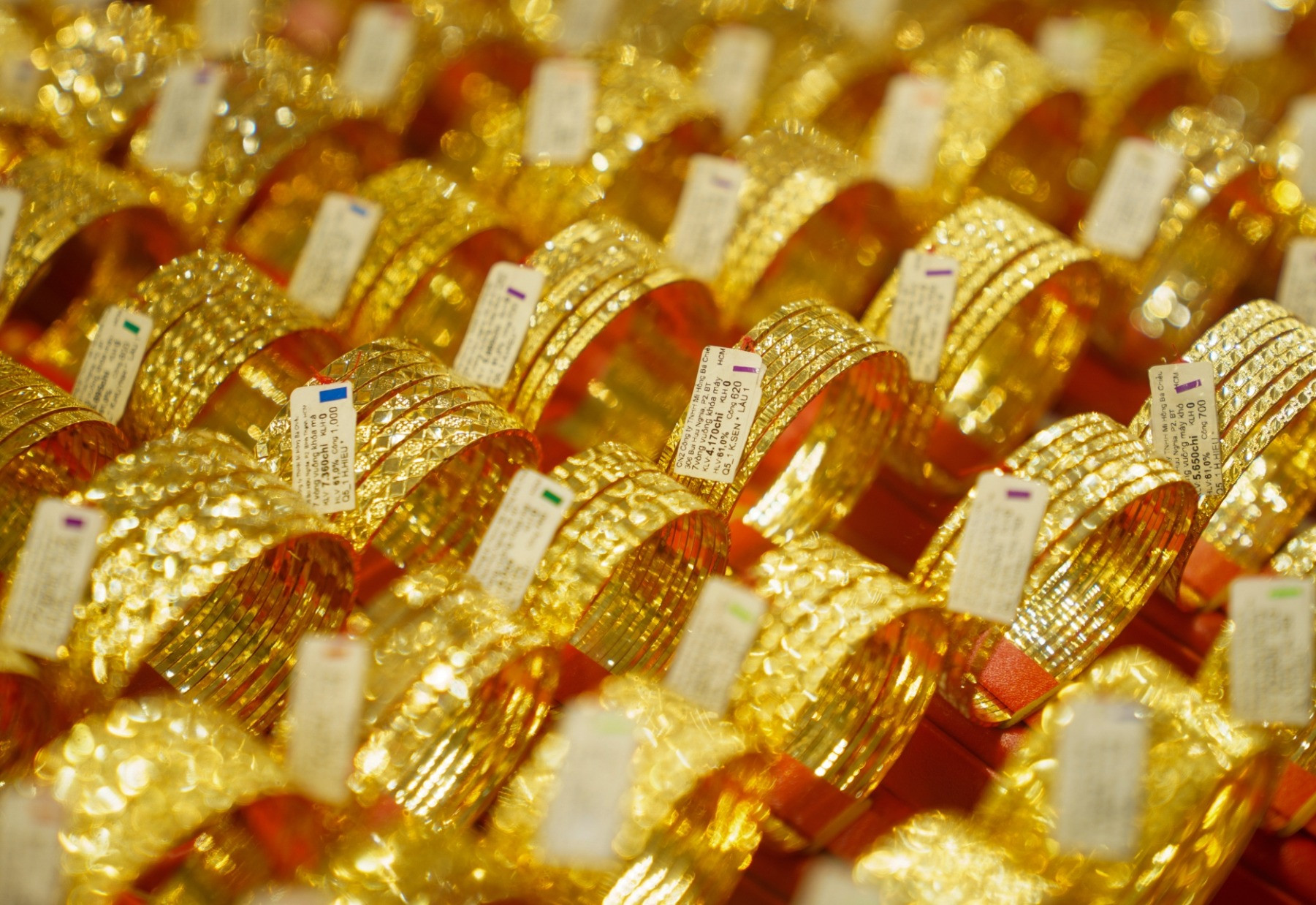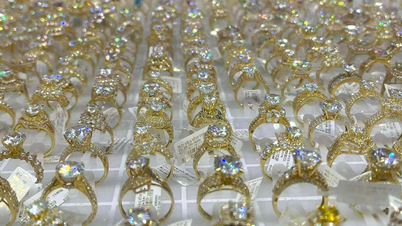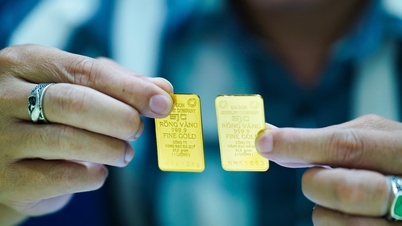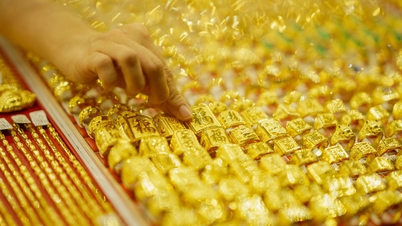A week of gold price sublimation
During the week of September 1-5, the world spot gold price continuously set historical peaks: on September 1, it surpassed the 3,500 USD/ounce mark, on September 2, it reached 3,520 USD, and on September 3, it jumped to a new record of 3,574 USD/ounce before cooling down to 3,553 USD/ounce and closing the week at 3,587 USD/ounce. The price of gold for December delivery is at 3,653 USD/ounce.
Domestic gold prices also continuously set new peaks. By September 6, the price of SJC gold bars increased by 1 million VND/tael in both buying and selling prices, trading at a record high of 133.9-135.4 million VND (buying - selling). The price of gold rings also exceeded 130 million VND/tael.
The slight decrease in gold prices on the international market is considered to be due to profit-taking activities to preserve profits when the price of this commodity increases too quickly. However, the upward momentum of gold prices is still intact according to many organizations and will soon reach the mark of 3,700 USD/ounce (about 119 million VND/tael).
Gold prices continue to show outstanding strength across multiple timeframes, according to technical analysis. The precious metal has recorded an impressive gain of about 2.4% this week and maintained a gain of 36.2% since the beginning of the year, demonstrating sustained investor demand for the traditional safe-haven asset.
Thursday's decline approached but failed to break key support levels such as $3,550 and $3,500 an ounce, suggesting underlying bullish sentiment remains strong.

Gold prices have surged to a record high above $3,500 an ounce and the rally continues as global uncertainty continues to drive demand, said Aakash Doshi, Head of Gold Strategy at State Street Investment Management, in a note to Kitco.
Given gold’s current momentum and trajectory, he believes there’s a 50/50 chance it will hit $3,700 an ounce by the end of September. There may not be enough time for gold to hit $4,000 by year-end, but it’s still a viable target in the first half of 2026, Doshi said.
Doshi is watching a key shift in the gold market as central bank-led demand is finally replaced by investment demand. He notes that economic uncertainty and the growing risk of stagflation have increased demand for liquid alternative assets like gold, which will be reflected in gold-backed ETFs.
“I think 2025 is the year of gold ETFs,” he said. “Money is catching up with the strong physical gold environment of the past few years.”
There are many supporting factors.
The first half of the year saw the largest inflows into gold-backed ETFs since 2020. Holdings remain well below the record set five years ago.
Doshi said that investment demand has not only increased but also gone hand in hand with gold prices remaining high. This is understandable in the context of slowing economic growth, rising inflation and rising public debt in the US.
"The US Federal Reserve (Fed) is trying to protect growth, but they are also worried about inflation. This is creating a steepening Treasury yield curve. Short-term interest rates are falling, but long-term interest rates are anchored by the impact of inflation and public debt in the United States. This is a perfect storm for gold," he analyzed.
Despite hitting record highs 26 times this year and continuing to hold support above $3,500 an ounce, Doshi said the outlook for gold remains relatively bright. While it does not offer a yield, its volatility and low correlation with other assets make it an attractive diversifier.
Sameer Samana of Wells Fargo Investment Institute also believes that gold and silver will outperform strong stocks in a low-interest-rate market. The Fed’s continued rate-cutting cycle (even though inflation is running at 3%, well above its 2% target) means that the entire system is geared towards risk assets.
Most assets are set to perform very strongly over the next 12 months, but gold and silver are even outperforming the buoyant stock market.
“If the Fed starts cutting rates and focusing on the labor market with inflation at 3%, it will essentially put bond holders in a difficult position,” he said. “Bonds will be under pressure and will not be an effective diversifier in a high inflation environment. Investors will then be forced to look for alternatives. And gold seems the most obvious choice because it tends to do well in times of uncertainty.”
According to Samana, with the goal of "diversifying away from the US dollar, central banks around the world are reconsidering the amount of money they want to hold in US dollar assets, more seriously than before.
Furthermore, if these countries thought about their economies first and then about fiscal discipline, inflation would probably be very high.
Silver is expected to be another big beneficiary of the low-interest-rate and risk-on environment, with prices holding steady above $40 an ounce. However, it is an industrial metal and economic recovery is not expected until the second half of 2026.
In a recent report, Suki Cooper, Head of Commodity Research at Standard Chartered Bank, predicted that the average gold price in the fourth quarter will reach $3,700 per ounce after the breakout. She explained that the appeal of gold as a safe haven continues to increase ahead of US employment data and the Fed meeting in September. Cooper also noted the recent surge in trading volume on the Shanghai Gold Exchange.
Source: https://vietnamnet.vn/xu-huong-tang-vung-chac-cuoi-nam-gia-vang-sjc-se-len-140-trieu-dong-2439506.html






![[Photo] Binh Trieu 1 Bridge has been completed, raised by 1.1m, and will open to traffic at the end of November.](https://vphoto.vietnam.vn/thumb/1200x675/vietnam/resource/IMAGE/2025/10/2/a6549e2a3b5848a1ba76a1ded6141fae)
































































































Comment (0)